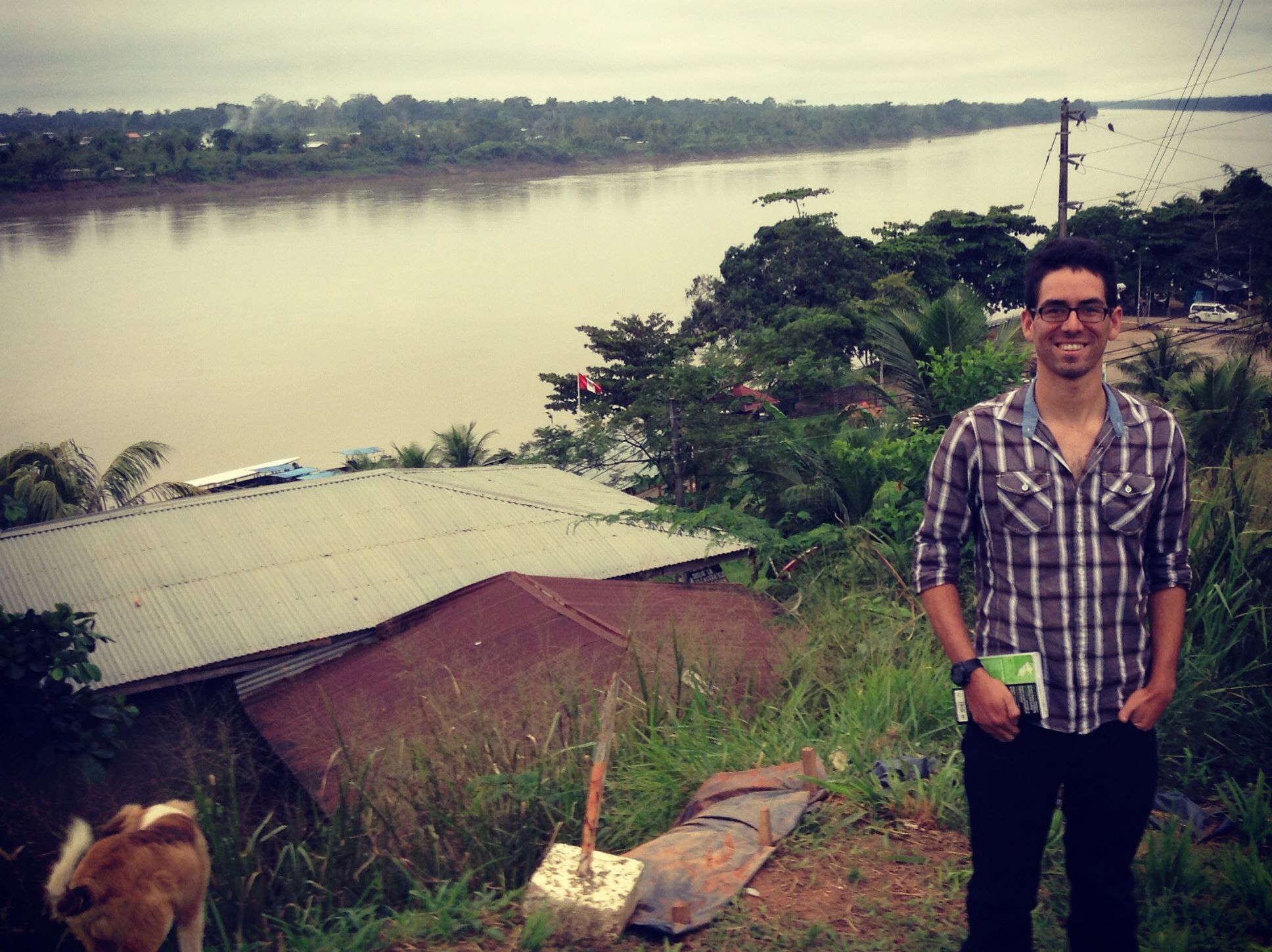“So this is it.” I had just woken up to a bus-full of sleeping Peruvian families and European backpackers after a full night of travel through the Andes. Outside my curtained window a warm tropical sun rose over dense trees and bodegas advertising cell phone carriers and Coca Cola, all of which blurred together in the rapid swoosh of bus travel.
A child of the 1990’s, I was excited for my first encounter with The Amazon. Early lessons on tropical forest canopies and adventures with the Magic School Bus had painted a picture in my young mind of Amazonian forests bursting with red frogs, where thick vines hung from emergent trees. (I wonder how today’s kids first learn about the Amazon, in a world where Reading Rainbow has evolved from kitschy 90’s TV show into a proposed online children’s library.)

I am in the Amazon to follow the gold rush. In my time in Latin America so far I’ve taken a backwards journey along the historic gold trade route. During a 4-day layover in Panama I passed through Portobelo, an ancient Spanish hub through which the gold of colonial Peru passed en route to Europe. Coincidentally, Portobelo inspired parts of Pirates of the Caribbean (Sir Francis Drake died just off its coast centuries ago). The historical impacts of Peru’s gold run deep.
The hunt for Peruvian gold continues to this day. Tens of thousands of migrant workers from throughout Peru have gathered along the Madre de Dios River to mine for gold. Operating on small concessions, the mining game in this part of Peru is crude and dirty. Seen from the air, gold mines look like the archetypal Captain Planet disaster: gaping wounds in the forest, bleeding sediments into the rivers.
Every schoolchild in my home state of California learns about the gold rush of 1849 and the “miner 49ers” who migrated to the Sierra Nevada in search of their fortunes. In those days, months before California was accepted into the Union, miners used quicksilver as an easy way to separate their gold from nonusable sediments and rocks. Today, many Sierra Nevada rivers are still closed to fishing due to quicksilver—or mercury—contamination.
A similar problem is arising in this corner of the Amazon, but on a wide scale. Gold miners in Madre de Dios combine liquid mercury with gold-bearing sediments to make an amalgam containing just the two elements. The amalgam is then heated, vaporizing off the mercury and leaving marketable gold behind.
But mercury, a tenaciously persistent element, doesn’t just go away. In shops where the amalgam is processed, mercury vapor is easily inhaled. The mercury enters lungs and goes directly to the brain, where it can damage neurological functioning. Mercury also settles into, rivers, where microbes convert it into a highly bio-available form called methylmercury. Working its way up the food web, methylmercury becomes concentrated in the tissues of river fish. People who consume contaminated fish, even far from gold mines, can suffer the effects of mercury poisoning: impaired cognitive thinking, impaired sensory and motor skills, coma, or death.
There are safer ways to mine for gold. Engineers in Madre de Dios are working with miners to implement appropriate technologies to capture mercury vapor, greatly reducing the risk of mercury contamination. Many transnational gold mining companies in other parts of Peru already employ safety mechanisms to reduce mercury pollution, and some forego the use of mercury entirely.
However, even if appropriate safety measures were put into place today, a public health crisis may still emerge. Recent studies by the Carnegie Amazon Mercury Ecosystem Project (CAMEP), a research consortium of U.S. and Peruvian universities, indicate that many local fish species are highly contaminated by mercury. A majority of local community members eat river fish, and many individuals tested for mercury exposure exceed limits set by the World Health Organization.
Working with local public health ministry and non-profit organizations, I’ll spend the summer trying to get a clearer picture of the risks of mercury contamination in Puerto Maldonado, a city of over 100,000 and the region’s capital. My study will target women of childbearing age, a sub-population of particular concern because infants are highly susceptible to mercury poisoning. There are a few questions local health authorities and I are keen to answer: how widespread is mercury exposure? What do local residents know about the risks of mercury, and where is their information coming from? What patterns of behavior are shared among people with high levels of mercury exposure, and what recommendations can we make to lower their risk?
In kindergarten we would work together to solve basic jigsaw puzzles, the kind with big pieces and simple pictures. As we grow older the puzzles become more complicated and tedious, the solutions less obvious. Somewhere in the puzzle of politics, economics, envrionment and health, there is a solution to avert a mercury crisis in Madre de Dios. This project will be a piece of the puzzle.